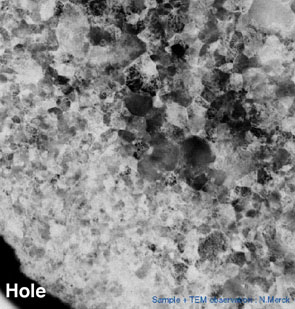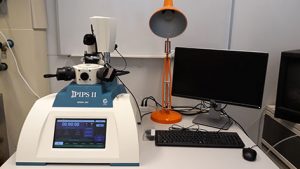
Ion beam thinning (ion milling) enables to thin specimens down to electron transparency. It usually is the final step after conventional grinding and in some cases after Tripod polishing.
Using electric discharge, Ar+ ions of some kV are generated and focused on the sample. The goal is the crystal lattice destruction at the surface followed by ejection of superficial atoms, leading to relief polishing and to suppression of the possible mechanical damages induced during the preparation.
CIME Ion millers:
2 Gatan PIPS II

Features:
- low incidence angle 0-10°, sectorial rotation of the sample, Voltage: 0,1-7 kV
- X,Y stage permits alignment of argon beams to region of interest on the sample Improved collimated beam provides useable voltages as low as 100 volts reduce thickness and damage of FIB lamella.
- Vacuum load-lock and liquid nitrogen cold stage to provide rapid workflows on beam sensitive samples .Cooling down any kind of sample (except cold sensitive samples) leads also to reduce amorphous layers and defects.
- Digital optical imaging with image storage and analysis in DigitalMicrograph® software
1 old PIPS
Features:
- low incidence angle 0-10°, sectorial rotation of the sample, Voltage: 0,5-5 kV. No cooling system.